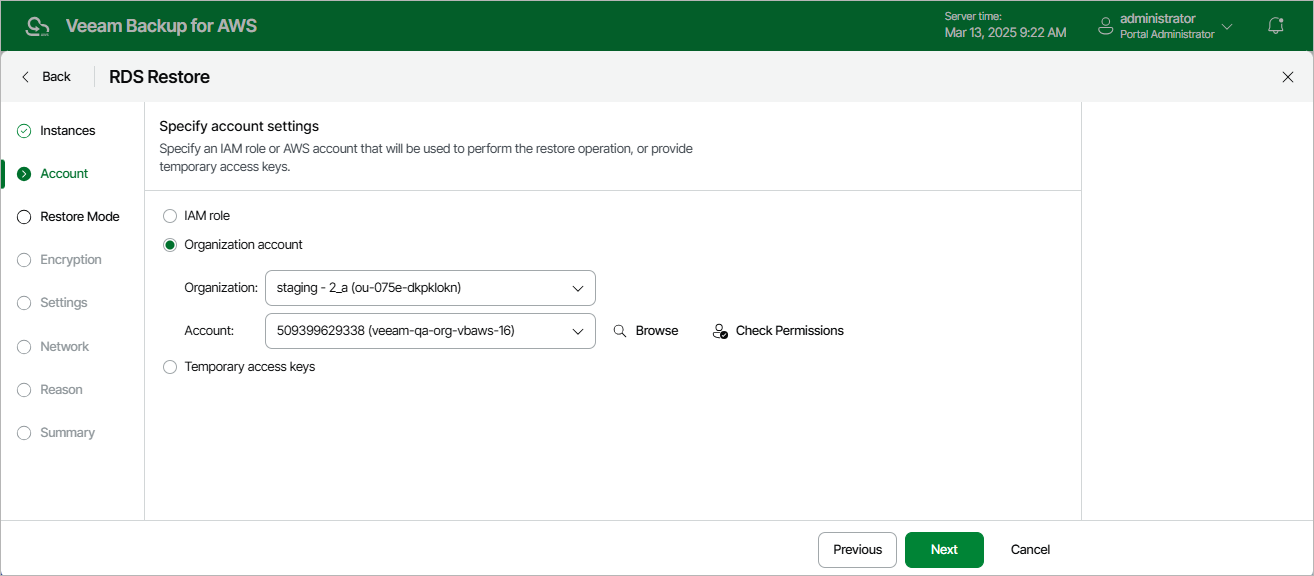Step 3. Specify Account Settings
At the Account step of the wizard, choose whether you want to use an IAM role of a standalone AWS account, an AWS account of an AWS Organization, or one-time access keys of an IAM user to allow Veeam Backup & Replication to perform the restore operation. For information on the permissions that the IAM role or IAM user must have to perform the restore operation, see RDS Instance Restore IAM Permissions.
Note |
Depending on whether the AWS account to which the source RDS resources belong is a part of an AWS Organization, Veeam Backup for AWS automatically does either of the following:
|
Specifying IAM Role of Standalone AWS Account
To specify an IAM role to be used for the restore operation, select the IAM role option and choose the necessary IAM role from the list. Keep in mind that the selected role must belong to an AWS account to which you plan to restore RDS resources.
For an IAM role to be displayed in the list of available roles, it must be added to Veeam Backup for AWS with the Amazon RDS Restore operation selected as described in section Adding IAM Roles. If you have not added the necessary IAM role to Veeam Backup for AWS beforehand, you can do it without closing the RDS Restore wizard. To do that, click Add and complete the Add IAM Role wizard.
Important |
It is recommended that you check whether the selected IAM role has all the permissions required to perform the operation. If some permissions of the IAM role are missing, the restore operation may fail to complete successfully. To run the IAM role permission check, click Check Permissions and follow the instructions provided in section Checking IAM Role Permissions. |
Specifying AWS Account of AWS Organization
To specify an AWS account to be used for the restore operation, select the Organization account option and do the following:
- From the Organization drop-down list, choose the necessary organization identity — either an entire AWS Organization or a limited scope of organizational units.
For an organization or a scope of organizational units to be displayed in the list of available identities, it must be added to Veeam Backup for AWS as described in section Managing AWS Organizations.
- From the Account drop-down list, choose an account that contains the IAM role whose permissions will be used to perform the restore operation. The role must be specified in the settings of the selected organization identity, as described in section Adding AWS Organizations (step 3).
For an AWS account to be displayed in the list of available accounts, it must be included in the the selected organization identity.
Specifying One-Time Access Keys of IAM User
To specify one-time access keys to be used for the restore operation, select the Temporary access keys option and use the Access key and Secret key fields to provide the access keys of an IAM user. Note that the IAM user must belong to an AWS account to which you plan to restore RDS resources.
Note |
Veeam Backup for AWS does not store one-time access keys in the configuration database. |
